How to use millet flour and sorghum flour is third in a 12-part series on gluten free flour. These are two flours gluten free cooks should know about. Millet and sorghum are ancient grains which means they are largely unchanged over the hundreds of years. They haven't been hybridized or genetically modified the way modern wheat has.
The goal with this series is to share just enough information to help you learn the properties and best uses for many flours. This in turn will improve your baking, and increase your confidence when making substitutions. I hope that will inspire you to try new recipes.
Jump to:
Are Millet Flour and Sorghum Flour Similar?
Millet flour and sorghum flour can be substituted for each other but that's not why I put these together. I simply choose them because I learned about them at the same time and I use them together in my EGFG gluten free flour blend.
I slowly found that this blend could be used in most of my baking. Not yeast doughs but it was a game changer for muffins, pancakes, quick breads, pastry, biscuits, Yorkshire pudding, churros and on and on.
Over time I came up with ways to experiment and learn about different flours. The final post of this series, How To Use A Gluten Free Flour Blend, shares details about how I continue to do that.
The important thing to remember is that you can learn to make fabulous baked goods with either one of these flours, both together in a flour blend, and even without them. Just keep baking and keep learning.
Baking with Millet Flour
Properties
- Easily digestible grain flour
- Mild, sweet, nutty taste that works in savoury and sweet recipes
- Adds delicate, cake-like crumb to baked goods
- Helps build structure in dough
- High calcium content, and is 10% protein
Best Uses for Millet Flour
- As part of a gluten free flour blend
- In quick breads and muffins
- Sprinkling on bread before baking
Cons
- More than 15-20% in bread recipes decreases volume and results in coarse, mealy texture
- More than 20% in muffins and quick breads leaves a starchy taste
- Consuming large amounts of millet is not recommended for people with thyroid concerns
Recipes Using Millet Flour
I have over 100 recipes with millet flour as part of my EGFG gluten free flour blend. Here are a few and you can see many more in a table in the first post of this series on rice flour.

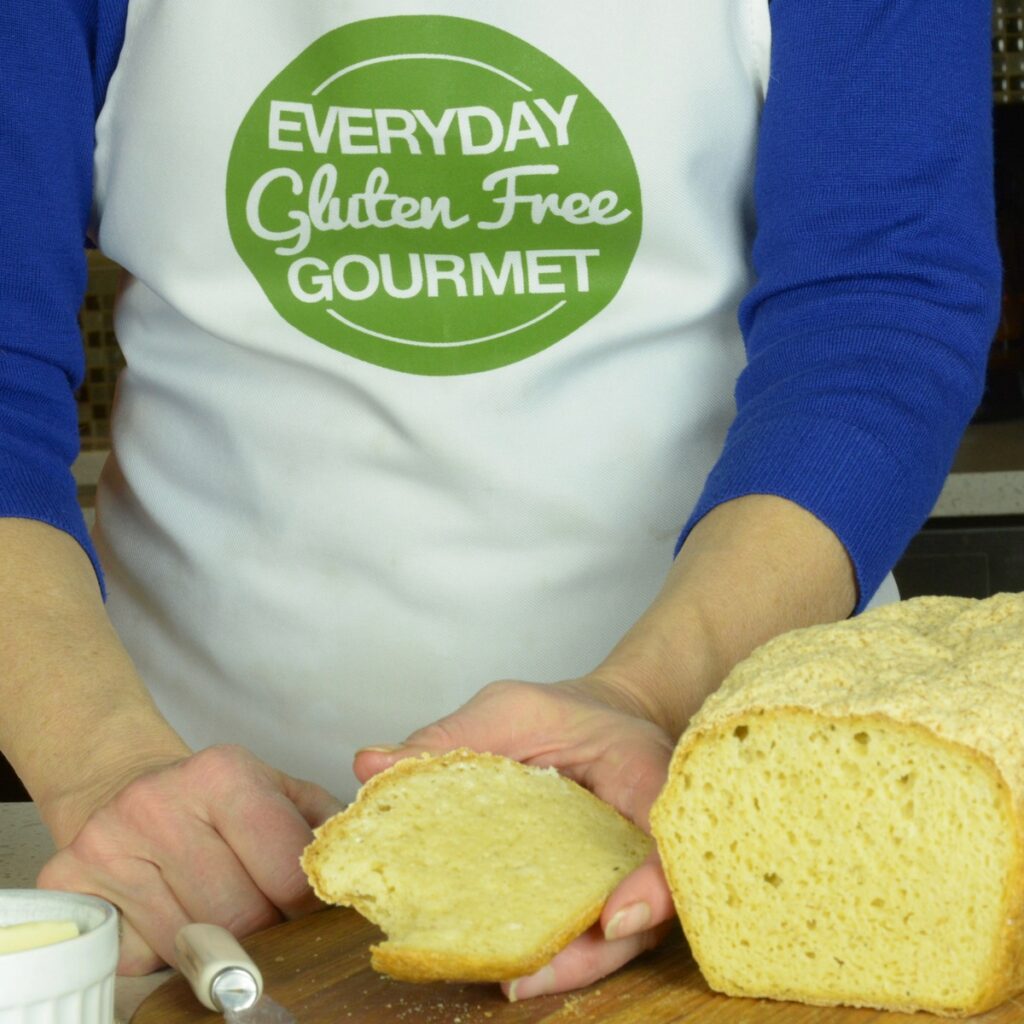
- Some recipes are Sticky Date Pudding, Strawberry Shortcake, Cinnamon Churros, several muffins and more.
- Don't miss the Yorkshire pudding!
- Millet Bread, an easy yeast bread made in a loaf pan. Perfect for beginners.
- Leslie of My Gluten Free Cucina makes a lovely Millet Bread that's waiting for you once you've decided to master gluten free bread. It makes excellent French Toast.
Baking with Sorghum Flour
Properties
- Mild, sweet flavour and a smooth texture
- Works in savoury and sweet recipes
- Helps bind moisture and increase CO2 bubbles formed during bread making
- Rich in iron and fibre, 12% protein
- Sold as sorghum flour or sweet, white sorghum flour
Best Uses for Sorghum Flour
- Breads, quick breads and muffins
- As part of a gluten free flour blend
- As a substitute for oat flour
- Used to make beer (which I have never done…but just so you know)
Cons
- More than 30% sorghum causes a slightly sour taste and dry mouthfeel
- Should be stored in fridge or freezer (I keep mine in a container with items to make my blend all in a cupboard and freeze the rest of the large package.)
Recipes Using Sorghum Flour
Listed above are some recipes using my EGFG gluten free flour blend that contains both millet flour and sorghum flour. Here are some ways I use sorghum flour as an individual flour.

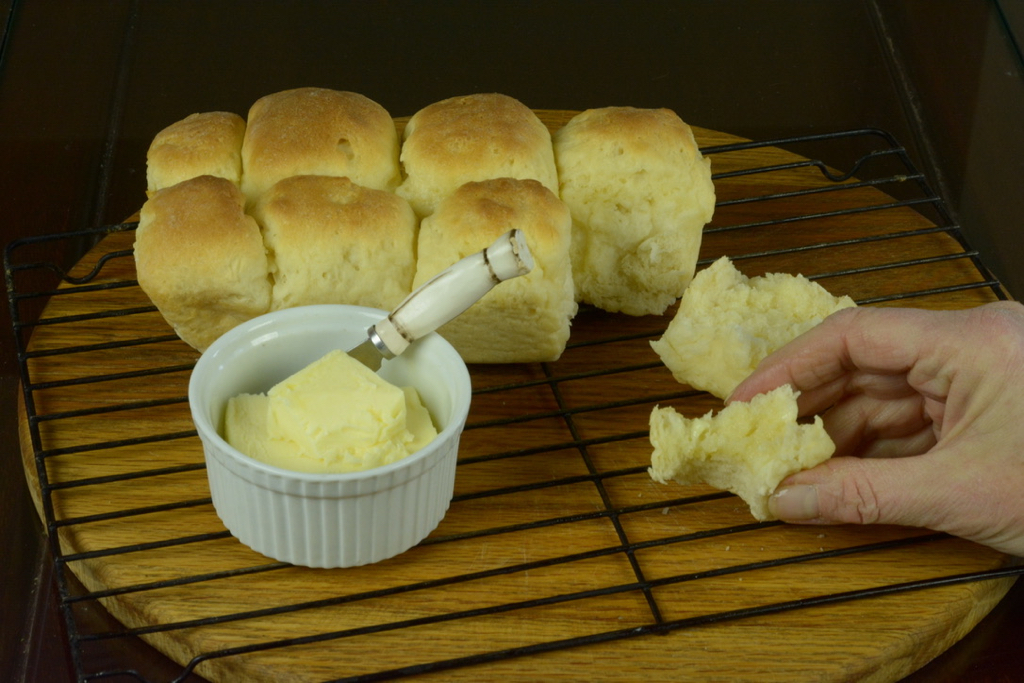
- A few recipes using sorghum flour, not as part of my flour blend, are Homemade Crusty Bread, Soft Dinner Rolls and Orange Cupcakes with Orange Icing.
- Jowar (sorghum) flatbread a simple recipe that's popular in Africa and India. I made it to answer a question on my YouTube channel but never mastered it or shared it.
Where To Buy Millet and Sorghum Flour
Bob's Red Mill sells both millet flour and sorghum flour (called white sorghum flour) online. I also find millet flour at the Asian grocery store near me (Watson brand). I buy sorghum flour (WestPoint brand) at a local health food store.
How To Use Sorghum Flour and Millet Flour on YouTube
That's it for two more flours. If you try something new be sure to let me know what you made and how it worked. Happy Baking!

Learn the best uses for many different gluten free flours to improve your coking! This ebook gives you the essential tips for more than 20 flours with recipe suggestions for each one. It's all in one place with no ads. This is an ebook you'll actually open.
How To Use Gluten Free Flour: A 12-Part Series
This series is intended to provide a basic overview of ingredients for everyday home cooks, both new and experienced.
__________________________________________________________________________
New here? I've got help to get you from overwhelmed and frustrated to confidently cooking gluten free food the whole family wants to eat. Subscribe and get your free resource, 29 Tips for GF flour.
🎉 I made it into the Top 100 Gluten Free Blogs for 2025 and the Top 40 Gourmet Food Blogs. To learn all the ways I can help you click here, Everyday Gluten Free Gourmet.
_________________________________________________________________________


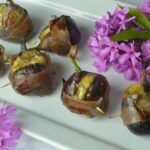




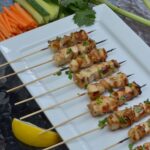

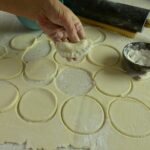


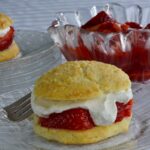




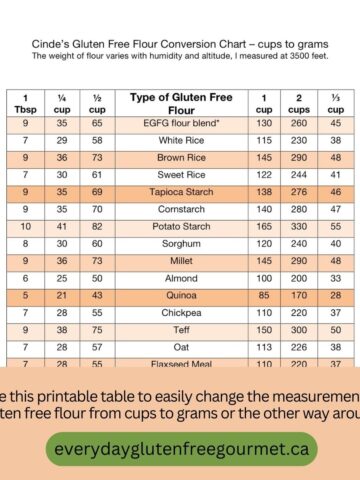

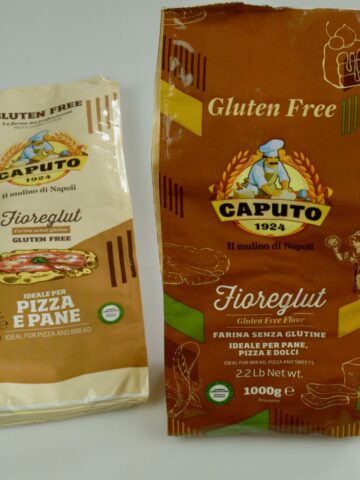
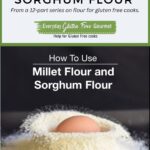
Linda
Hi there. I enjoy millet as a whole grain in a few things I have tried, but anytime I use it in flour form the finished product tastes quite bitter. Is it just me or does millet flour generally have a bitter flavour?
Thanks!
Cinde Little
Hi Linda! I don't think it's just you. Everyone has their own palate and nothing highlights that like eating gluten free food. My downloadable gluten free flour guide says recipes with more than 20% millet flour may have a starch taste, and in yeast breads it can have a mealy, coarse texture. It took me several years to really believe that recipes with more than 40% white rice flour had a gritty mouthfeel and tasted gluten-free. So my recommendation is to believe what you figure out. Either avoid recipes with millet flour or decrease it in your recipe. If you were making my blend that has 200 g each of millet flour and sorghum flour, I would change that to 300 g sorghum flour and 200 g of millet flour. Best of luck and thanks for sharing that. It will definitely help someone else reading here.
Sharon Dahle
Glad I found your website. Was just told I need to try and go gluten free, but have been unable to find good products in store. Can your EGFG flour blend be used for sourdough bread? Thanks for all the hard work!
Cinde Little
Hi Sharon! Going gluten free is a steep learning curve for everyone and understanding 20+ gluten free flours and numerous combinations of them in flour blends is challenging. The short answer is no. My EGFG flour blend is like those so called 'all-purpose blends.' Mine works in recipes like muffins, pancakes, waffles, biscuits, quick breads and it even works for pastry. It doesn't work in yeast bread recipes. As you start to look at all the blends you can buy you'll see some specifically made for bread, pizza etc. If you're just trying a gluten free diet to see if your symptoms improve I recommend two things. First, see if you can get the support of a registered dietician who is familiar with the gluten free diet. Second, stay away from all the bready products we love and focus on eating more whole foods. This is probably not what you want to hear but you'll learn more quickly and possibly get some answers. If you do need a strict gluten free diet for life the good news is there is lots of amazing food you can make, it just takes time and effort. Best of luck on your journey.
Pervez Beg
I am struggling with these flours for making loaf of bread. The end result is not coming good.
Cinde Little
Hi Pervez! Yes, gluten free bread can be hard to figure out. Yeast breads will always turn out best if you use a combination of different flours. My friend over at My Gluten Free Cucina has a nice recipe for Millet Bread. My Crusty Loaf uses sorghum flour with a combination of other flours. I hope you are able to try one of these two recipes. Happy baking!
Kirti Trivedi
What are Gi &Glycemic load of Sorgum flour vs whole wheat
Cinde Little
Hi Kirti! I am not a nutritionist, but I did some research and this is what I found, including a few details for readers not as familiar with this topic. Grains in their natural form have a low glycemic index (GI). When processed into flour they can convert starch to sugar more quickly resulting in a higher glycemic index. The ranges are LOW 0-55, MEDIUM 56-69 and HIGH 70+. Whole wheat flour can have a medium GI while white flour is considered high at 85. The GI index of the sorghum grain is 70 so it's also classified as high. I could not find a value for the flour but it would naturally be higher. The glycemic load is a calculation that includes the amount of grain consumed. You could assume these foods would be used in similar amounts but the calculations would get complicated for gluten free recipes using several different flours. I don't have expertise in this area but it was easy to find calculators for this conversion. I hope that was helpful for you.
Jorge Bizarro
I can find Millet flour more easily in Brazil, bur sorghum is way more scarce and difficult to find. Do you think Amaranth or Buckwheat flours would be reasonable substitutes??
Cinde Little
Hi Jorge. Oat flour is often recommended as the best substitute for sorghum flour. Oat flour is also a flour than can easily be made from whole oats in a food processor. Of course the oats must be safe gluten free oats if you have celiac disease. Millet flour would be my second choice and I know some people make my EGFG flour blend substituting all the sorghum in that recipe with millet flour. (I should try that.) I haven't used amaranth flour but I think it would be a better choice than buckwheat flour which is considered a heavier one. Best of luck! I'd love to hear what you think works best.
Anne
I am wondering if you have any good substitutes for potato flour. Thank you.
Cinde Little
Hi Anne! My Crusty Bread recipe is the only recipe I have that calls for potato flour. If you can't tolerate potato flour you can substitute cornstarch in a yeast bread recipe. Your bread will be slightly more pale so try sprinkling your bread with brown rice flour. If you're keen on experimenting you might also increase the brown rice flour by a few tablespoons and decrease the cornstarch. Another substitute is using 3/4 cup unseasoned mashed potatoes in place of 3/4 cup potato flour. I hope one of those substitutes appeals to you. Happy baking!
Marlene
For people who cannot eat nightshades, mashed potato cannot be substituted. I have successfully substituted potato flour with arrowroot (starch or flour same thing) one to one.
Cinde Little
Thanks for sharing that substitute Marlene. I don't know if Anne just didn't have potato flour, couldn't find it or couldn't eat it. Either way one can never have too many substitution suggestions. Thanks again and happy cooking!
James
>> Consuming large amounts of millet is not recommended for people with thyroid concerns
Can please you elaborate a little on why this is? I have thyroid probs and am trying to go gluten free, but have never heard this before!
Is it bad for Hashimotos (autoimmune), hypo (underactive), hyper (overactive), or all types of thyroid conditions?
Cinde Little
Hi James. I read this in the gluten free cookbook from America's Test Kitchen which I would call a credible resource. There is no amount stated, just that large amounts of millet may suppress thyroid function. I think this is rare but I recommend you consult with your doctor or a registered dietician to be safe. The good news is people are cooking with all kinds of flour combinations and you can certainly find out without millet flour. Check out my the table in my post, 11 Gluten Free Flour Recipes, to see what flour combinations people are using. Good luck!
Jeannie
so excited to get what you teach about using gluten free flours. is there anyway I can get the info in written form. my phone does not work as it should or I am just not technical savvy.
Cinde Little
Hi Jeannie. I'll email you and we can figure out how to get you what you want.
Tess
Very much appreciate your time and effort in this post and all your other very informative blog posts 🙂 Thanks.
Cinde Little
I glad you're finding it helpful Tess. I don't think the learning ever ends but neither does the need to cook. 🙂 Thanks for letting me know!